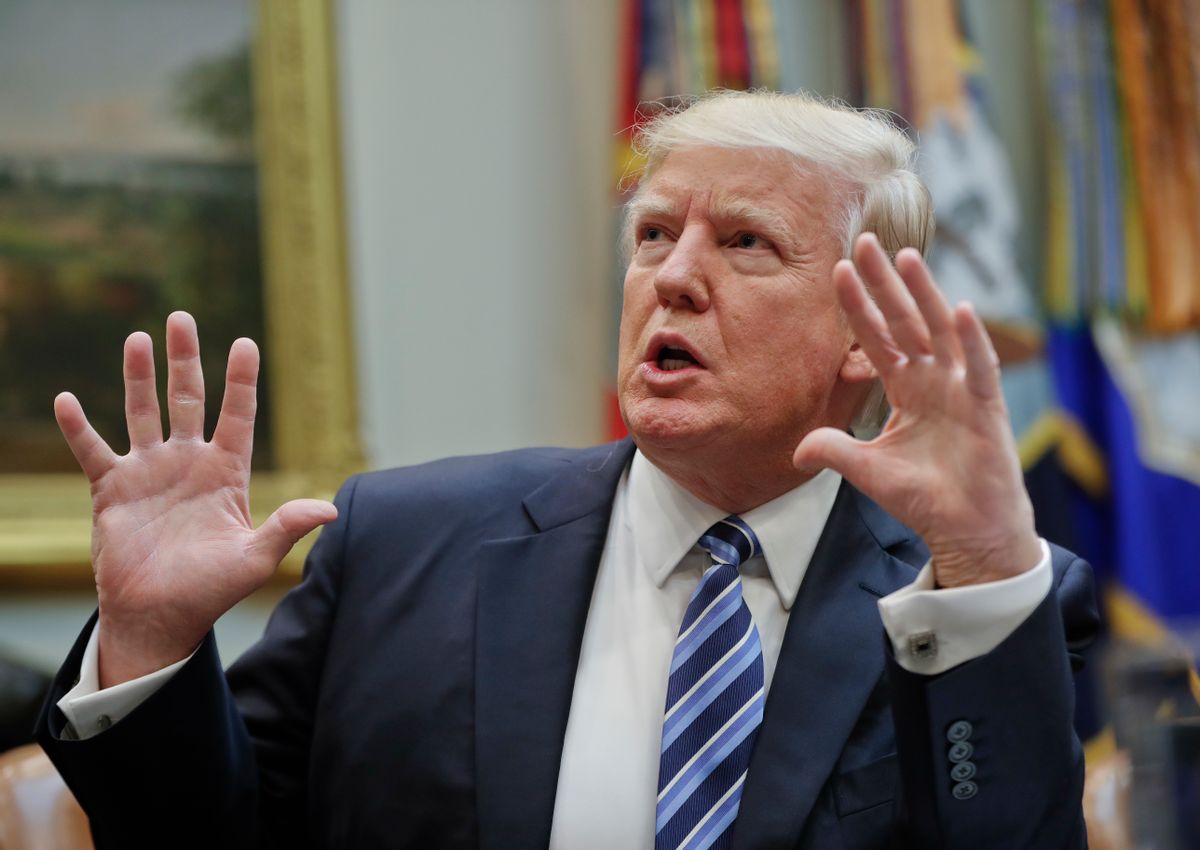Researchers have determined that the rampant xenophobic and anti-immigrant rhetoric that dominated much of the media's attention during the 2016 presidential election led to a “very significant” increase in the number of reported hate-based acts of violence or intimidation across the U.S.
In 2016 there were 1,037 hate-related incidents in nine U.S. metropolitan areas, up from 841 in 2015, according to the Center for the Study of Hate and Extremism at California State University, San Bernardino. The FBI defines a hate crime as a “criminal offense against a person or property motivated in whole or in part by an offender’s bias against a race, religion, disability, sexual orientation, ethnicity, gender or gender identity.”
In recent months, incidents of hate directed against transgender women, African-Americans, Hispanics, Muslims, Hindu Americans, Sikh Americans and others have gained national media attention. The recent wave of bomb threats against Jewish community centers and schools has even gained international attention, as President Donald Trump was criticized for his reluctance to denounce the attacks. But researchers say that such acts of violence and intimidation have been on the rise for much of 2016, as Trump's campaign helped focus presidential politics on issues like illegal immigration and terrorism.
Cities including New York City, Chicago and Columbus, Ohio, registered double-digit increases last year. Cincinnati, a considerable part of Trump country, saw a 38.5 percent increase in hate crimes year-over-year.
But perhaps surprisingly, 2016 saw rates of hate-related incidents rise most sharply in the nation's most liberal cities. Washington, D.C. saw such incidents increase 62 percent from 2015, while the number of anti-LGBT hate crimes in the District increased by 59 percent. Hate crimes related to ethnicity or national origin quadrupled in that nation's capital last year, those related to religion tripled, those related to gender identity or expression nearly doubled, and those related to sexual orientation increased by about 50 percent.
New York City had 380 reported hate-related incidents last year, a 24 percent increase from 2015 and the highest number in over a decade.
“Based on the timing and the extraordinary increase we’ve been seeing, not only in New York but around the nation, you have to conclude that the presidential campaign was the major factor,” Stephen Davis, the NYPD’s deputy commissioner for public information, told Bloomberg News last month.
“We’re getting enough data that appears to indicate a broad national increase,” said Brian Levin, the director of the nonpartisan Center for the Study of Hate Extremism at California State University, San Bernardino. Hate crime data is notoriously difficult to track; Levin explained that his previously unreleased report is preliminary data, based on information provided by state and local law enforcement and government agencies.
The seven cities “do have a decent population and a statistically relevant number of cases where we can at least draw some preliminary conclusions about an overall trend,” Levin said. "I don't think we can just explain away the increase with increased reporting".
Furthermore, perpetrators appear to have been emboldened by Trump's win. For example, 43 percent of 2016 hate crimes in Philadelphia happened post-election in November and December.
“We definitely saw an election-time bump,” Levin said.
In Chicago, the police department has received 13 reports of hate-related incidents during the first five weeks of 2017 — more than triple the number recorded in the first five weeks of 2016.
This most recent study is in line with a Southern Poverty Law Center (SPLC) report released in Feburary that found 1,372 reported incidents of hate, harassment or intimidation during the three months following the November election. Researchers at SPLC directly attributed the dramatic spike to Trump's campaign, saying his success “energized the radical right.
“2016 was an unprecedented year for hate,” SPLC's Mark Potok said in a statement. “The country saw a resurgence of white nationalism that imperils the racial progress we’ve made, along with the rise of a president whose policies reflect the values of white nationalists. In Steve Bannon, these extremists think they finally have an ally who has the president's ear.”
The FBI’s most recent hate crime report, issued last November, showed incidents targeting Muslim-Americans jumped 67 percent in 2015. Trump announced his presidential run in June of that year and proposed his infamous Muslim ban in December.
"Trump’s run for office electrified the radical right, which saw in him a champion of the idea that America is fundamentally a white man’s country," said Potok.
The number of hate groups in the United States rose to 917 in 2016 from 892 in 2015, the Center for the Study of Hate and Extremism reported, and the most dramatic increase was in the number of anti-Muslim hate groups, which jumped to 101 in 2016 from 34 in 2015.
Another recently released study suggests that the media's coverage of Muslims in America and throughout the world may be just as culpable in the rise of such incidents as the president of the United States. Researchers from Georgia State University found that although Muslims commit far fewer acts of terrorism than non-Muslims in the U.S., attacks by Muslims are written about 4.5 times more than other attacks.
“Whether intentional or not, US media outlets disproportionately emphasize the smaller number of terrorist attacks by Muslims, leading Americans to have an exaggerated sense of that threat,” the researchers wrote in the Washington Post.
The researchers examined all 89 terrorist attacks carried out in the U.S. between 2011 and 2015, as listed by the Global Terrorism Database, and found that Muslims perpetrated only 12.4 percent of those attacks but received 44 percent of the total news coverage in print media.

Shares